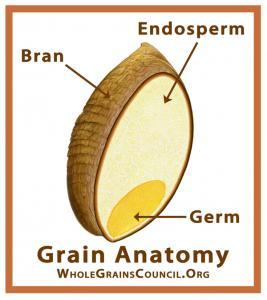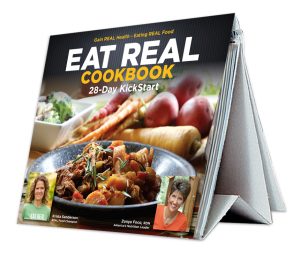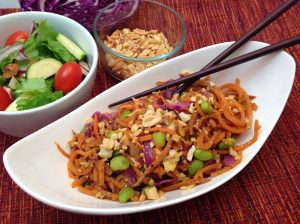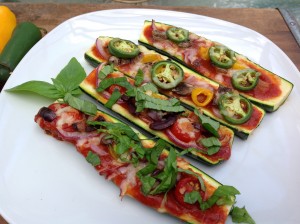 Are you confused about all the messages regarding gluten?
Are you confused about all the messages regarding gluten?
If so, you are not alone!
Maybe you or someone you know is already living a gluten-free lifestyle…or maybe you have considered removing gluten from your diet, but just can’t stand the thought of giving up bread, pasta, pizza and so many other beloved foods.
We want to help shed some light (and optimism!) on the gluten dilemma!
First, what is gluten?
 Gluten is the family of proteins found in wheat, rye, spelt and barley. Gluten acts like a glue to hold foods together, helping them maintain their shape.
Gluten is the family of proteins found in wheat, rye, spelt and barley. Gluten acts like a glue to hold foods together, helping them maintain their shape.
Gluten, found in the endosperm of the grain, also exists in a wide variety of processed foods (often in surprising and unexpected places)…including processed meats, sauces, salad dressings, ice cream and more.
Why do some people have an intolerance to gluten?
 Most people tolerate gluten with no problem. However, those with celiac disease, gluten sensitivity, or wheat allergies can experience issues by eating foods that contain gluten.
Most people tolerate gluten with no problem. However, those with celiac disease, gluten sensitivity, or wheat allergies can experience issues by eating foods that contain gluten.
Celiac disease is the most severe form of gluten intolerance. It is an auto-immune disorder and, if you have celiac disease, your body treats gluten as a foreign invader. Your immune system attacks the gluten along with the lining of your intestine, which causes damage, nutrient deficiencies and digestive issues. Symptoms can include bloating, digestive discomfort, anemia, diarrhea, constipation, headaches, skin rashes, depression or weight loss. Because of this wide array of symptoms, celiac disease can be very difficult to diagnose. Up to 80% of people with celiac don’t even know they have it.
There are two ways to test for celiac disease: 1) a blood test and 2) a biopsy from the small intestine. If you are having issues, you can try to follow a strict gluten-free diet for a few weeks to see if your symptoms improve, but if you think you have celiac disease, it is best to consult your doctor. Some people, even if never officially diagnosed, simply feel better limiting their gluten intake.
Why was gluten never a concern before?
There’s a good chance that 20 years ago, you never even heard of gluten, and now you probably know at least 3 people that have either a gluten intolerance or sensitivity. Modern wheat is different than the wheat our ancestors ate. And, there is controversy about whether the cross breeding and hybridization of the wheat we eat today may or may not contribute to the rise of celiac disease and gluten intolerance.
Dr. William Davis, author of “Wheat Belly,” claims that “cutting wheat from your diet is the pathway to a healthier, more energetic life.” He argues that grains and gluten can make some people feel sick, and the type of grains we eat today have been so altered and modified over the years that they’re no longer what they used to be.
How do you focus on eating gluten-free?
If you have a need or desire to limit gluten intake, we have great news! At Eat REAL America, and in our new Eat REAL Cookbook, we have hundreds of recipes that are naturally gluten-free…and delicious! Here are a few special staples that you can equip your kitchen with to make gluten-free meals super-easy:
- Gluten-free oats. Oats are naturally gluten-free, but brands specifically marked “gluten-free” were carefully grown, milled and packaged in a way to avoid cross-contamination from other grains.
 Gluten-free all-purpose flour. Bob’s Red Mill and Hodgson Mill offer good varieties, which are a nice blend of assorted flours like rice and tapioca, so the flour performs as desired. Favor “whole-grain” varieties. See our coaching tip for more on flours and gluten-free options.
Gluten-free all-purpose flour. Bob’s Red Mill and Hodgson Mill offer good varieties, which are a nice blend of assorted flours like rice and tapioca, so the flour performs as desired. Favor “whole-grain” varieties. See our coaching tip for more on flours and gluten-free options.- Gluten-free pasta, made from corn, rice, quinoa, buckwheat or legumes. Or, replace pasta with veggies — spaghetti squash and spiralized zucchini noodles or sweet potatoes are great alternatives and useful to keep on hand. Try the Zucchini Noodles with Roasted Tomatoes or Pad Thai with Sweet Potato Noodles.
- Corn tortillas, to use instead of flour tortillas.
- Gluten-free pizza crust, or pita bread, for making our pizza recipes and Middle Eastern Nachos. Also, consider using zucchini, eggplant, Portobello mushrooms or other veggies for your crust, such as Zucchini Pizza Boats!
 Gluten free-enchilada sauce. Hatch and LaVictoria are two brands that offer gluten-free options. To make your own enchilada sauce, find our favorite recipe in Quick Tips.
Gluten free-enchilada sauce. Hatch and LaVictoria are two brands that offer gluten-free options. To make your own enchilada sauce, find our favorite recipe in Quick Tips.- Gluten-free panko bread crumbs. Yes, they do offer these super crunchy bread crumbs in a gluten-free variety!
- Tamari gluten–free soy sauce to use whenever a recipe calls for soy sauce.
- Chilies in adobo sauce: check ingredients to be sure, but our experience is San Marco is a readily available gluten-free brand.
Is gluten the problem?
Some people start out thinking that gluten is the culprit that is making them feel bad. They remove it from their diet, feel loads better, and then later realize it was the removal of processed food that did the trick! “Going gluten-free” nixes a lot of processed food and their damaging additives — either way, you will win by focusing on REAL food! (Just don’t be tricked by all the overpriced, over-processed gluten-free crackers, cookies and pizzas on the market…instead, focus on REAL FOOD “trade-outs” to remove gluten.)
There is also the belief by many nutritionists that we have become overdependent on wheat, have failed to properly diversify our grain intake, and are not appropriately balancing our meals by incorporating more vegetables than grains. You’ll see that all our recipes, whether gluten-free or not, offer great diversification – typically with the veggies exceeding the grains – in an effort to help prevent these sensitivities from developing.
Try gluten-free?
 If you are experiencing issues and want to try eating gluten-free to see if you notice a difference, it’s easy to do…simply click on “gluten free” under the REAL MEALS section of the website for hundreds of delicious recipes.
If you are experiencing issues and want to try eating gluten-free to see if you notice a difference, it’s easy to do…simply click on “gluten free” under the REAL MEALS section of the website for hundreds of delicious recipes.
And, because we know many people find avoiding gluten helpful, we’ve made our entire upcoming Eat REAL Cookbook naturally gluten-free (or give the easy GF alternative).
Please share your experiences and successes with us!
 LEARN MORE ABOUT THE NAPKIN!
LEARN MORE ABOUT THE NAPKIN!



Leave A Comment